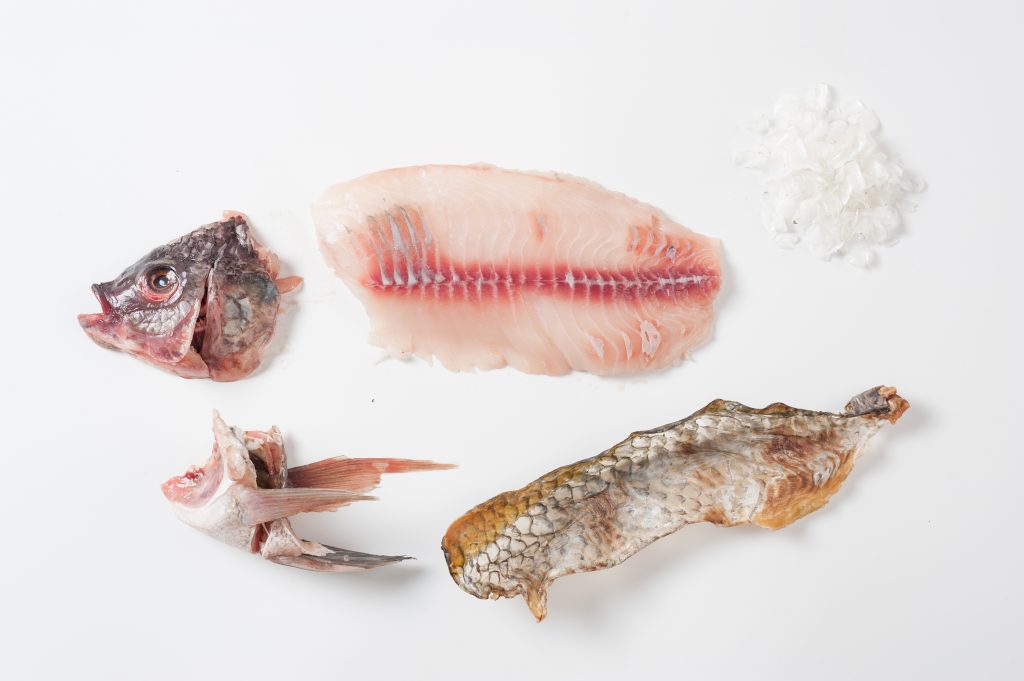Daily large quantities of fishery waste are discarded from industries of fish processing and filleting. Considering not only the environmental impact but also the loss of potentially valuable products, a fish wastes management should be assessed. The uses of tilapia byproducts are numerous but as-yet-unknown to the general public. A brief account of some important uses of tilapia byproducts is given below.
- Biodiesel: It is made from vegetable oils and animal fats in order to replace diesel. This biofuel is biodegradable and non-toxic, as well as, it has lower emissions than the petroleum diesel. Researchers extracted fish oil from different tilapia waste, such as viscera, fins, heads, skin, scales and a mix of all the products. They evaluated the yield and acid number of tilapia oil according to the used type of waste. Also, they examined the potential of these extracted oils for biodiesel production. According to their findings, the highest potential obtained from the viscera that produced 217L of biodiesel per ton of processed waste. The tilapia visceral oil is low in moisture and free fatty acids (FFA) content, which is important for the feasibility of transesterification. Tilapia viscera byproducts could be converted into a high-yield biodiesel.
- Medical biomaterials: Various pharmaceutical products and nutritional supplements contain collagen. The primary structure of collagen is formed by units of glycine-proline-hydroxyproline. The most common sources of collagen are bovine and pig skins or chicken wastes. However, animal-borne diseases urged the need of alternative collagen sources, such as marine animals. Collagen can be extracted from fish scales or skin. According to Qiang Huang, R., et al. (2011), every year in China about 300 thousand tons of fish scales are discarded with the total of 2 million tons of fish waste. These huge quantities of scales could produce great amounts of collagen which could be further used for medical, cosmetics and nutritional purposes. Additionally, tilapia skin is a byproduct that contains about 27.8% collagen and can be used for the extraction of collagen increasing the economic value of tilapia processing industries. Tilapia skin collagen, due to its biological properties, can be used to develop healing biomaterials, cosmetics or food supplements. Already tilapia collagen powder from tilapia skin or scales is available in the market. The price per kilogram is varied from 30 to 100€, according to the prices given by the Alibaba global trader. Moreover, tilapia skin collagen sponge and electrospun nanofibers were tested as wound dressing. In tilapia skin exist large quantities of collagen proteins, types 1 and 3, which are important for scarring. The collagen of tilapia skin is capable to heal wounds rapidly and effectively. This treatment has been registered for an international patent for treating burn wounds and already many kids and adults have been benefited by this treatment.
- Leather: Many companies around the world are producing various products from tilapia skin leather, such as shoes, wallets, vests, bags, jewelry, belts and many other goods . In 2011, the trend of tilapia leather products attracted the attention of the famous shoe designer, Manolo Blahnik, who created a special line of shoes from fish skin; the value per pair of shoes was 792€! The cost of tilapia leather products is not as cheap as we could expect; the price of a wallet from tilapia skin leather is around 90€, while its price as a texture varies from 1 to 3€ per piece (25-30cm length, 0.5-0.7mm/0.6-0.8mm/0.7-0.9mm thickness).
- Fish glue: This natural glue has been used by artists and craftsmen since antiquity. It has been used in the gluing of different materials, like wood, paper, cardboard and leather. It is a reversible glue for this reason has been used mainly in creative projects of furniture and woodwork. It is formulated from fish heads, bones and skins. In 2017, a group of researches prepared very good quality glue from tilapia wastes. In their research , the glue production is proposed as an alternative way to enhance the value added of the fish for the new product, to reduce the cost of the eliminated garbage and as a solution to the environmental impact of the fish processing industries.
- Other products: The by-products generated from industrial filleting of tilapia can produce other products such as surimi (minced fish) or gluten free tapioca starch. Both products could be obtained from mechanically recovered fish meat that otherwise would be discharged into the environment.


